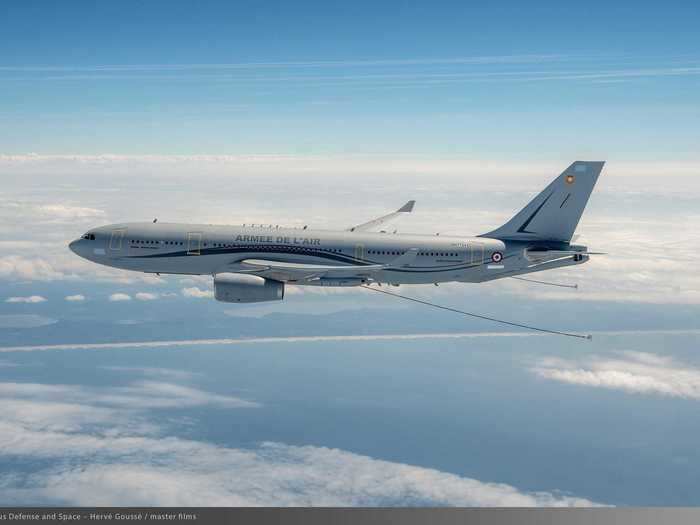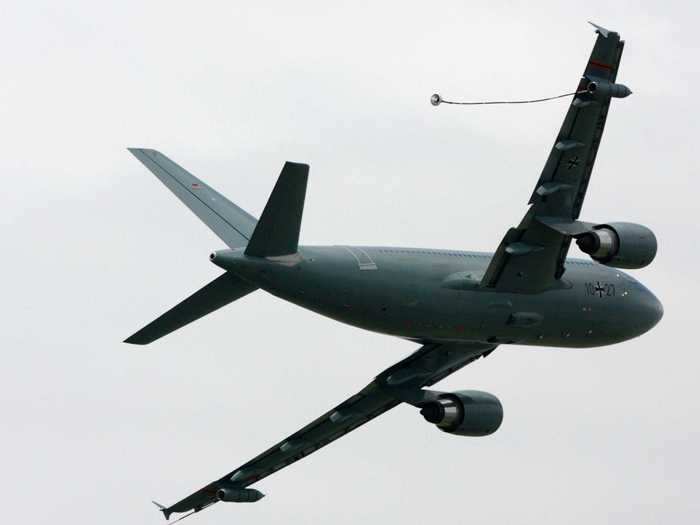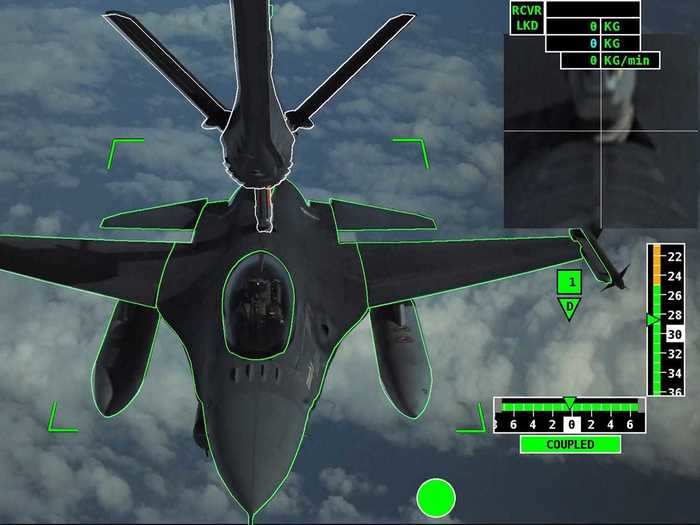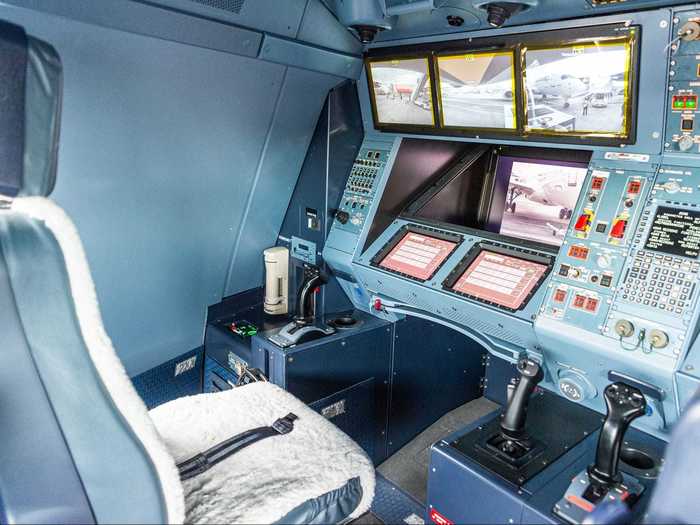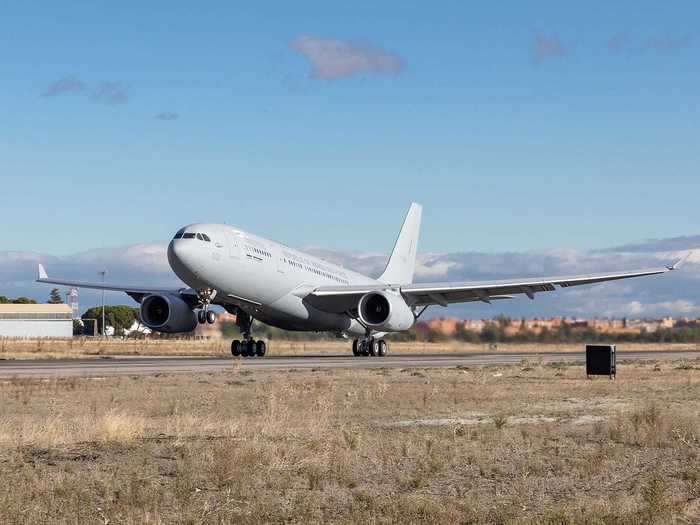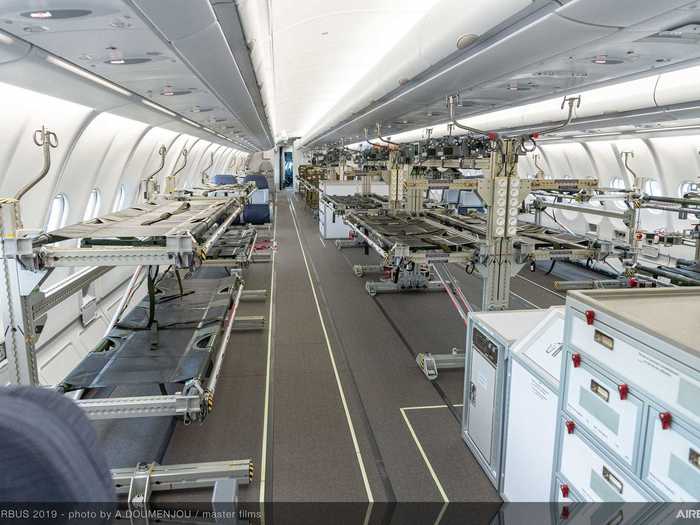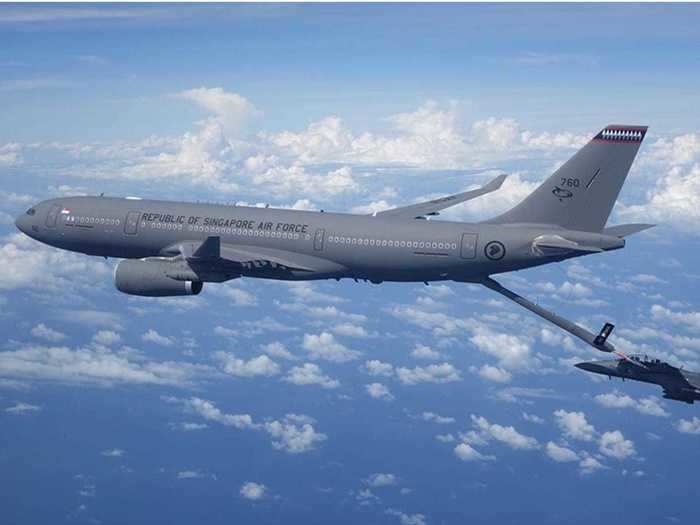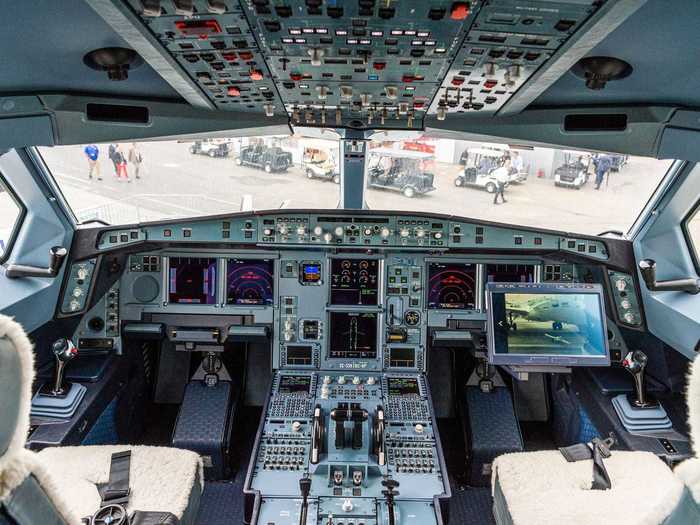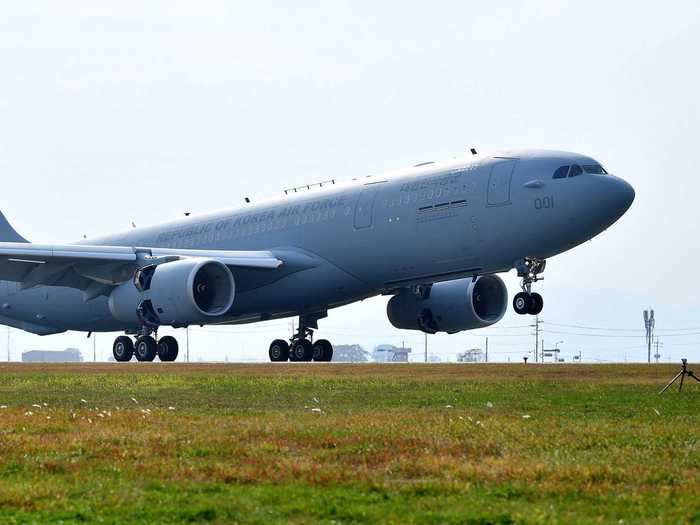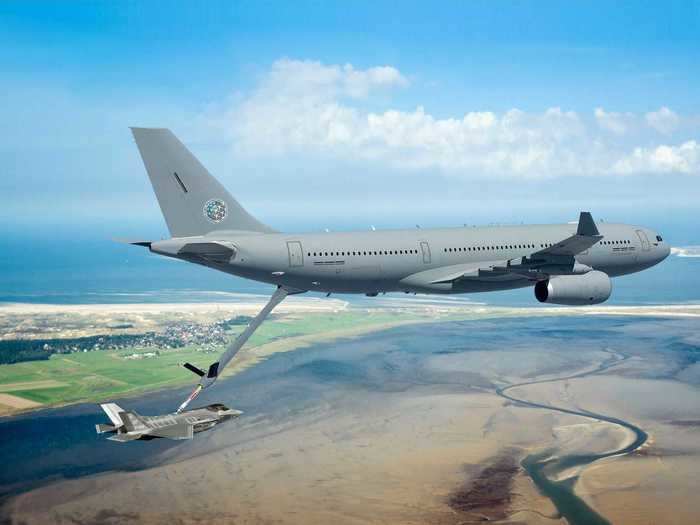An Airbus A330 MRTT aircraft.Airbus
- An Airbus A310 aerial tanker successfully underwent a test to autonomously refuel an aircraft to be implemented on the A330 MRTT.
- The achievement marks the next step in Airbus' goal to enable autonomy in routine flight operations.
- Rival Boeing has not been able to achieve the same goal as its new flagship refueler continues to show problems.
- Visit Business Insider's homepage for more stories.
Airbus just bested Boeing, achieving a massive milestone in an area that's recently been haunting the American manufacturer: air-to-air refueling.
In the latest match-up in the cross-ocean rivalry between the American and European manufacturers, an Airbus A310 MRTT tanker test aircraft successfully completed an automatic refueling operation with a Portuguese Air Force fighter jet. Boeing has not yet been able to achieve the feat, even with its newest aerial tanker.
Airbus has been leading the charge in autonomous flight operations, with the newly-automated refueling process the latest step in reducing manual control in aerial procedures. In December, an Airbus A350 XWB successfully took off without pilot input, using software integrated to onboard cameras.
The system has plans to be implemented on Airbus' newest tanker, the A330 MRTT, with the certification phase scheduled to begin next year. The Airbus A330 MRTT is the European competitor to Boeing's KC-46 Pegasus.
Currently in use with the US Air Force, the KC-46 Pegasus is Boeing's newest jet but is also proving to be one of its most problematic. Boeing's Pegasus is nowhere near autonomous refueling, with the company needing to fix a key system before autonomy can be discussed, an Air Force official told DefenseNews.
Take a look at how Airbus is making history with its flying gas station.
Read the original article on
Business Insider
The certification phase for the system is estimated to begin in 2021 and once complete, the A330 MRTT will be able to tout its new autonomous capability to potential customers.
An Airbus A330 MRTT aircraft.
JEAN-PAUL PELISSIER/Reuters
Airbus had bid for A330 MRTT to be the replacement tanker that the US military was looking for. It ultimately went with Boeing.
An Airbus A330 MRTT aircraft.
Tim Chong/Reuters
Nearly $1 billion had been withheld from Boeing due to the Pegasus' unresolved problems, DefenseNews reported with the COVID-19 pandemic ultimately seeing Boeing receiving those funds back as part of federal aid.
A Boeing KC-46 Pegasus boom.
LINDSEY WASSON/Reuters
Software issues, faulty sensors, and other setbacks pushed the KC-46's delivery day by over a year and continue to cause headaches for the Air Force.
A Boeing KC-46 Pegasus.
Reuters
While the 737 Max is Boeing's high-profile commercial folly, the Pegasus has been its the thorn in the side of its defense division.
A Boeing KC-46 Pegasus.
LINDSEY WASSON/Reuters
Air Force officials told DefenseNews' Valerie Insinna in a story published on April 8 that only once Boeing fixes the Remote Vision System on the Pegasus, autonomous refueling can start to be implemented.
A Boeing KC-46 Pegasus.
LINDSEY WASSON/Reuters
While Airbus is celebrating its plane's newest milestone, the news is particularly embarrassing for Boeing, whose KC-46 Pegasus aircraft isn't even in the early stages of having such an ability and has been plagued with issues.
An Airbus A330 MRTT aircraft.
Airbus
"During this process, the [air refueling operator] simply monitors the operation," Airbus said in a press release.
An Airbus A330 MRTT aircraft.
Airbus
Another refueling option involves deploying two hoses from each wing. This option can only be used by aircraft with extended or extendable fuel receivers.
An Airbus A330 MRTT aircraft.
Airbus
The actual test was performed on an A310 tanker test aircraft but the system will be a key feature of the A330 MRTT once certified.
An Airbus A310 MRTT.
Pascal Rossignol/Reuters
Airbus, however, was able to create software that uses the aircraft's cameras to guide the boom into the refueling port automatically. Once the two are connecting, the system automatically refuels and then disconnects once the process is done.
The first automatic refueling by an Airbus A310 tanker test aircraft.
Airbus
The typical process for air-to-air refueling involves having the recipient aircraft fly closely behind the tanker, at which point a boom is extended by an air refueling operator inside the jet using cameras and/or spotters to guide the boom into the refueling port.
An Airbus A330 MRTT aircraft.
Airbus
Airbus has been working with the Portuguese Air Force to test a new function to eventually be installed on the aircraft, automatic air-to-air refueling via a boom.
An Airbus A330 MRTT aircraft.
Airbus
The next, it can be flying 300 soldiers home from the battlefield or acting as a medical evacuation aircraft.
An Airbus A330 MRTT aircraft.
Airbus
The multi-role function enables the aircraft to be flexible in its mission. One day it can be refueling fighter jets on a repositioning trip from Europe to Asia...
An Airbus A330 MRTT aircraft.
Airbus
Seven countries currently fly the type including Singapore, the UK, France, United Arab Emirates, Saudi Arabia, Australia, and South Korea.
An Airbus A330 MRTT aircraft.
Airbus
The A330 MRTT and -200 feature nearly identical airframes and cockpits but the former features military-grade enhancements and exterior cameras for the refueling process.
An Airbus A330 MRTT aircraft.
Airbus
The smallest member of the A330 family, the -200 model currently sees service with many of the world's airlines but is now hitting another stride as a Multi-Role Tanker Transport.
An Airbus A330 MRTT aircraft.
Airbus
The Airbus A330 MRTT was developed from the A330-200 passenger jet, a popular civilian airliner.
An Airbus A330 MRTT aircraft.
Airbus

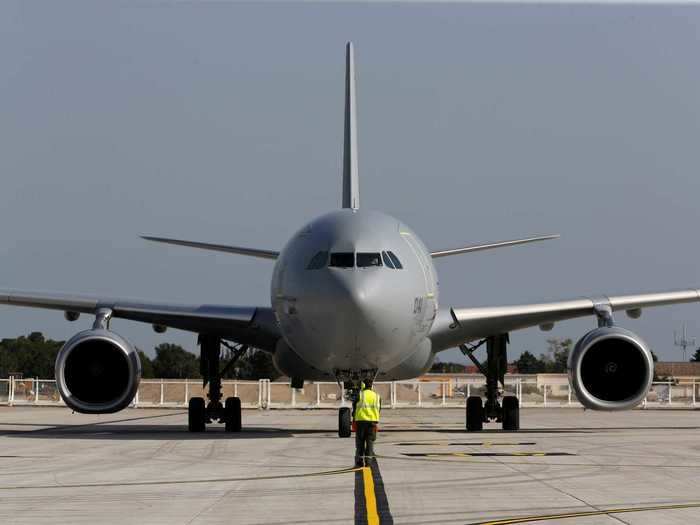
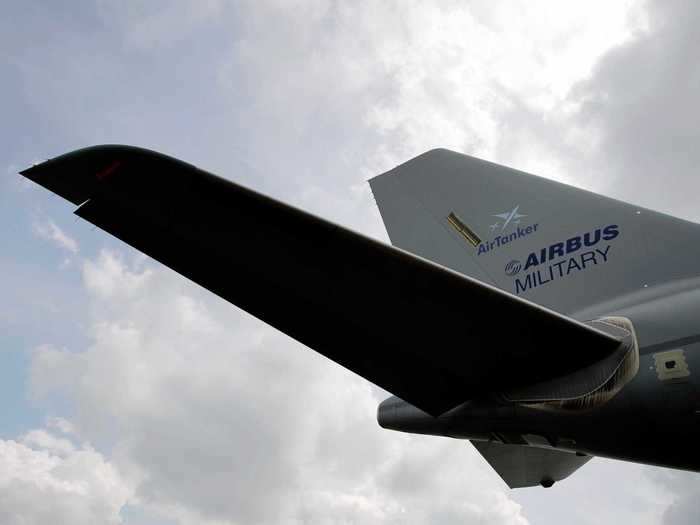
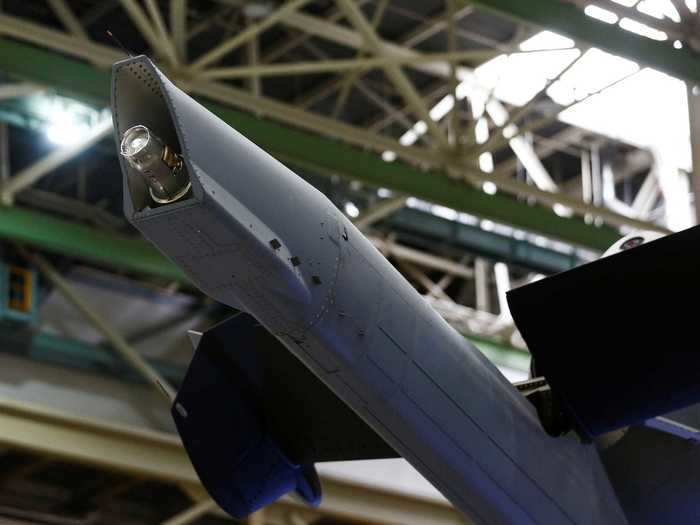
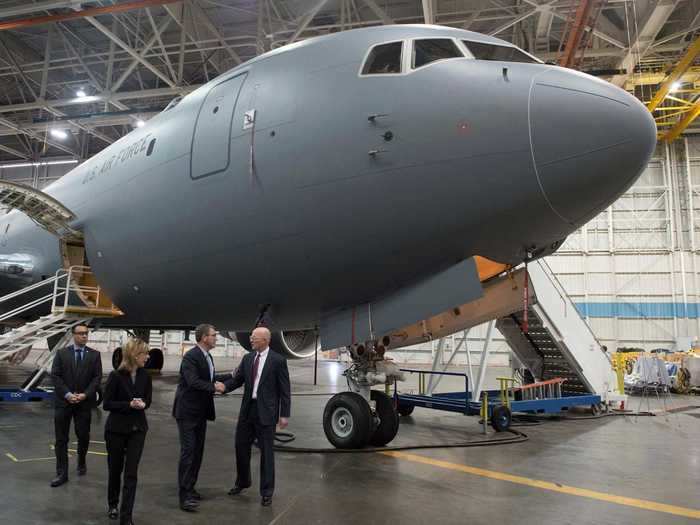
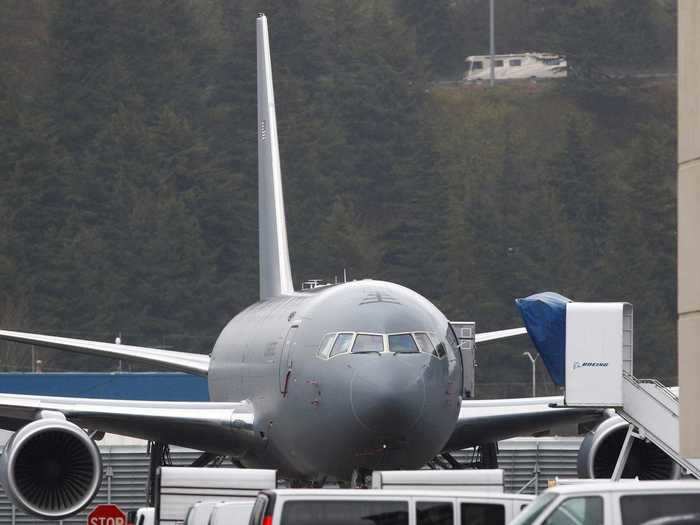
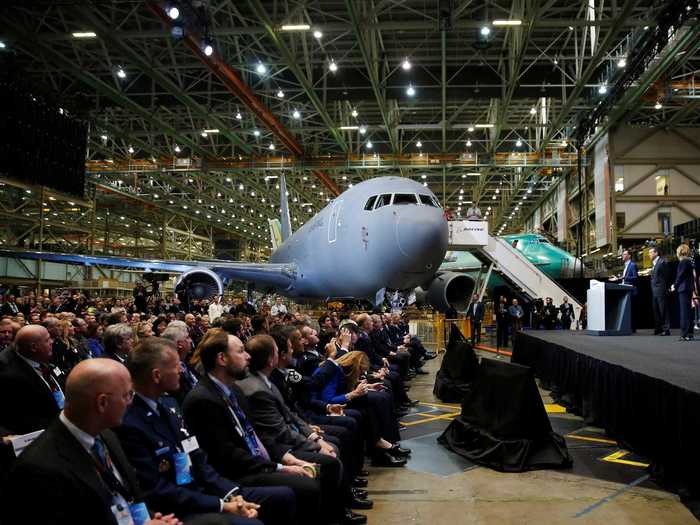

!["During this process, the [air refueling operator] simply monitors the operation," Airbus said in a press release.](https://staticbiassets.in/thumb/msid-75507363,width-700,height-525,imgsize-68573/quotduring-this-process-the-air-refueling-operator-simply-monitors-the-operationquot-airbus-said-in-a-press-release-.jpg)
